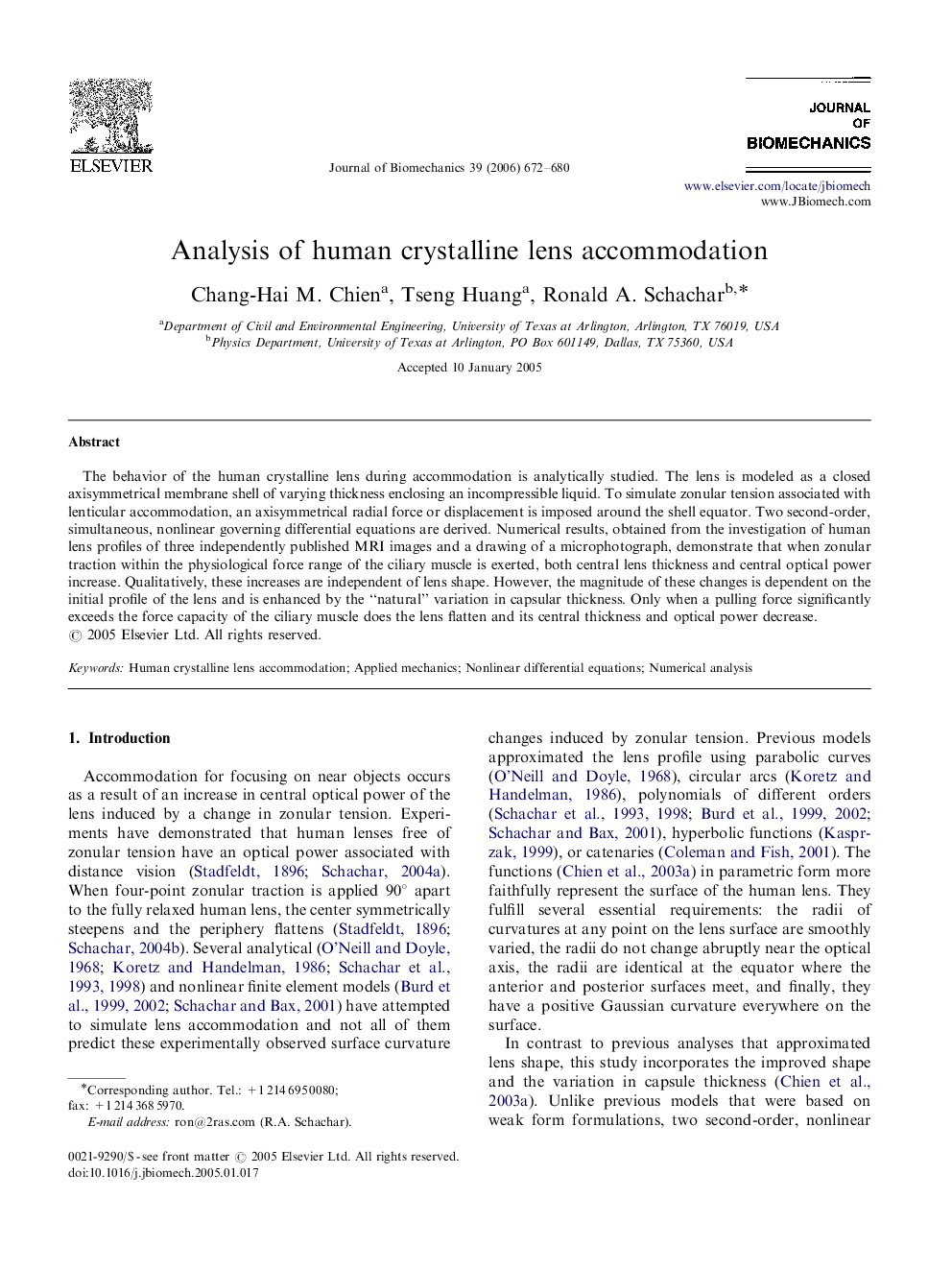| Article ID | Journal | Published Year | Pages | File Type |
|---|---|---|---|---|
| 875194 | Journal of Biomechanics | 2006 | 9 Pages |
The behavior of the human crystalline lens during accommodation is analytically studied. The lens is modeled as a closed axisymmetrical membrane shell of varying thickness enclosing an incompressible liquid. To simulate zonular tension associated with lenticular accommodation, an axisymmetrical radial force or displacement is imposed around the shell equator. Two second-order, simultaneous, nonlinear governing differential equations are derived. Numerical results, obtained from the investigation of human lens profiles of three independently published MRI images and a drawing of a microphotograph, demonstrate that when zonular traction within the physiological force range of the ciliary muscle is exerted, both central lens thickness and central optical power increase. Qualitatively, these increases are independent of lens shape. However, the magnitude of these changes is dependent on the initial profile of the lens and is enhanced by the “natural” variation in capsular thickness. Only when a pulling force significantly exceeds the force capacity of the ciliary muscle does the lens flatten and its central thickness and optical power decrease.
